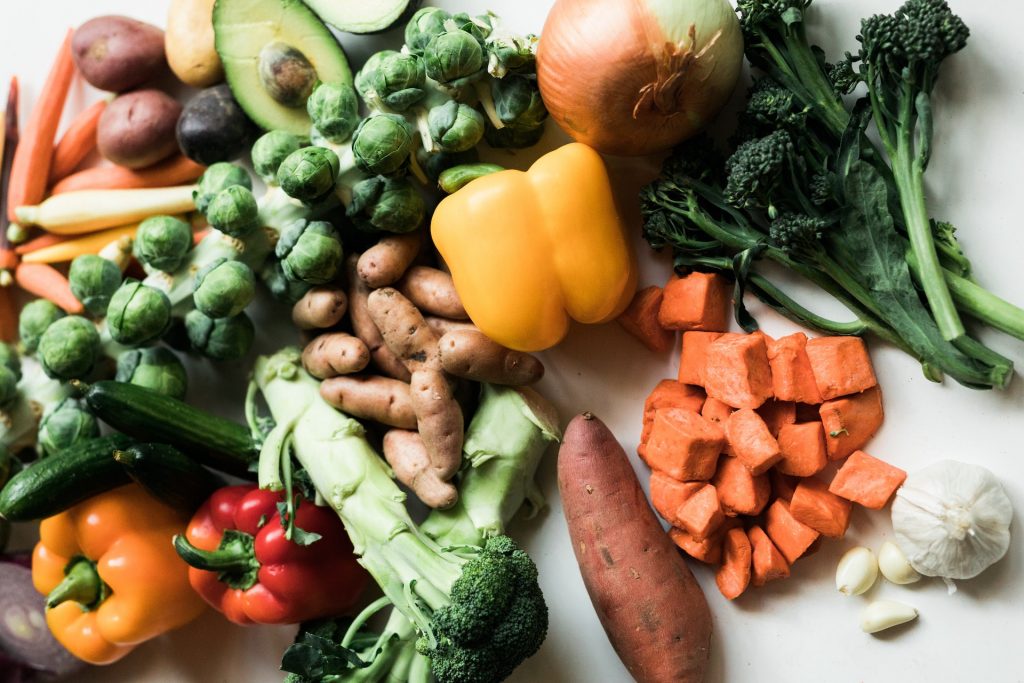
What’s up with vegetarianism?
This year, vegetarian awareness week will mark me being vegetarian for 6 years. There are many reasons that people decide to stop eating meat – for me it was to lower my environmental footprint. For others, it can be a religious or cultural practice, a strategy to lower their grocery budget, an eating pattern to improve their health, or a way to avoid the harming of animals.
There are a lot of subcategories of vegetarianism and veganism, but the main terms are:
- Vegetarian: Does not eat meat; generally, avoids anything that requires the death of an animal. Most still eat cheese, eggs, yogurt, butter, etc.
- Pescatarian: Same as vegetarian, except that they also eat fish.
- Vegan: Does not eat anything that an animal was involved in producing. Vegans do not eat any animal products, from milk to honey.
But what about the protein? Health effects and benefits:
Protein and iron are actually in a lot more food than we tend to think, making it simple to get enough out of a plant-based diet. I actually get quite enough iron through dark leafy greens such as spinach, fortified breakfast cereals, whole grain bread products, beans and lentils, and tofu and soy meat substitutes. If you want more information about how easy it is to get enough complete proteins in your plant-based diet, check out our blog on the Top 10 Vegetarian Sources of Protein. Another great resource on this subject is Med Instead of Meds. You can watch their video about how to swap your proteins and the health benefits between meats as well as other protein sources.
Also, one of the reasons plant-based diets are often healthier is because we often spend a bit more time thinking about how to make sure our diets are well-rounded, which is something anyone can do! No matter what your eating pattern, it’s always best to monitor with regular blood tests and conversations with your doctor. Being vegetarian does not guarantee better health – as with any way of eating, you have to be mindful to eat less processed foods and more whole foods.
That said, a vegetarian or vegan diet that is careful to emphasize fiber through fruits and vegetables, beans and legumes, and whole grains can make a big difference in your health; studies show that this type of diet is the most effective in lowering your risk of cardiovascular disease and improving your cholesterol. And any steps you make towards more plant-based eating will have beneficial effects, even if you don’t or can’t cut out meat entirely.
How to move towards a more plant-based diet:
- Start Small: You don’t have to go meat-free all at once. Start by doing a meatless Monday (or any day of the week). Or choose to do meat-free breakfasts and lunches, only eating meat at dinner. Maybe you’d rather commit to a pantry swap like non-dairy milk permanently. You could stop buying meat and only eat it when you eat out. Every tiny bit helps reduce your environmental impact, decrease participation in factory farming, and improve your health.
- Our Blog: One easy way to find more vegetarian recipes is to go on the ESMMPD blog and check out our recipes – anything posted by Surabhi or by me will be vegetarian as we both are! But our teammates post some great vegetarian meals as well, so just keep checking back (and follow us on social media) to see more. We also suggest using the site Med Instead of Meds which has a lot of great recipes for both meat-eaters and plant-based folks. These resources are super easy to use as you can pull the recipes up on your phone or tablet.
- Try Something New: Don’t be afraid to expand your diet. There are such a wide variety of fruits, vegetables, and grains out there that with the addition of different seasonings and sauces, you could never get bored!
- Be Mindful of What You Eat: Keep in mind that not all vegetarian food is healthy food! Brownies are vegetarian, and so are sauces made with tons of butter and cream. You’ll still need to be mindful of the recipes that you use and foods that you eat. I like to roast extra vegetables so I can grab a bowl broccoli as a snack, for example, which does a great job of filling you up (much better than potato chips or Oreos, which are vegan!).
You may also enjoy:
A Med-Inspired Vegetarian Wrap
Top 10 Vegetarian Sources of Protein
The Ultimate Cheap, Easy, and Healthy Meal: Vegetarian Split Pea Soup
Don’t miss another great blog: Subscribe Now
